E-Bike Tips & Guides
Navigating the Costs: Budgeting for Your Child’s Electric Dirt Biking Adventure
Embark on your child’s Electric Dirt Biking journey with confidence. Our comprehensive guide helps you navigate this thrilling sport’s costs and budget effectively.
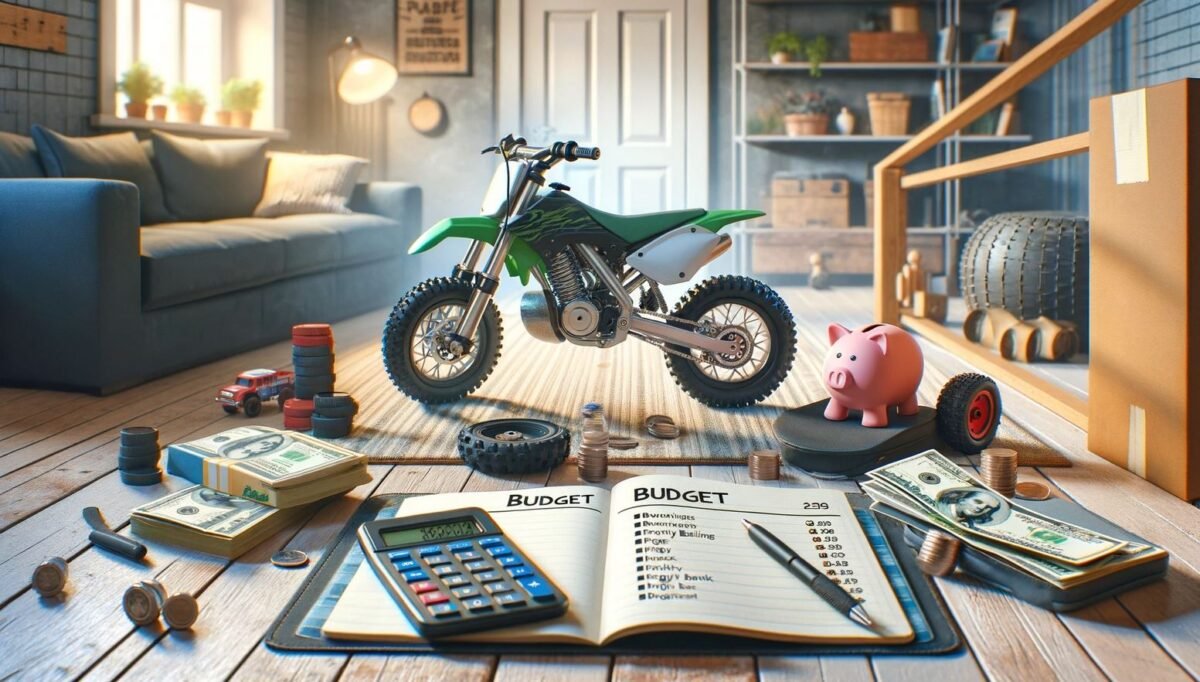
As the thrilling world of electric dirt biking continues to captivate children’s and teenagers’ interests, many parents navigate the new terrain of budgeting for this modern sport. Electric dirt biking, known for its eco-friendliness and reduced noise levels, offers a unique and exciting avenue for outdoor adventure, making it an increasingly popular choice for young enthusiasts.
For parents, embarking on this electrifying journey with their children involves more than just enthusiasm; it requires thoughtful financial planning. Understanding the costs associated with electric dirt biking – from purchasing the right bike to ongoing maintenance and training expenses – is crucial. This comprehensive guide is tailored to give parents a clear picture of the financial commitment to supporting their child’s passion for electric dirt biking.
This article will break down the various cost components, including the initial investment in a suitable electric dirt bike, the necessary safety gear, regular maintenance costs, training fees, and the expenses related to participating in events and competitions. Additionally, we’ll touch on long-term considerations such as resale value and upgrade costs, ensuring parents have all the information needed to budget effectively for their child’s new adventure.
Embarking on the electric dirt biking journey can be both exhilarating and daunting. However, with proper financial planning and insights, parents can ensure their children enjoy the sport’s thrills and learn valuable lessons in responsibility and passion pursuit.
Table of Contents
Initial Costs: Choosing the Right Electric Dirt Bike
When introducing your child to electric dirt biking, the first significant expenditure is the bike itself. Selecting the right electric dirt bike involves balancing costs with your child’s needs and skill level.
Factors Affecting the Price of Electric Dirt Bikes
- Power and Performance: The bike’s power output and performance capabilities often dictate its price. Higher-powered bikes for advanced riders tend to be more expensive.
- Battery Life: Longer battery life can increase the price, but it also means more riding time between charges.
- Brand and Quality: Established brands with a reputation for quality and durability might cost more but can offer better long-term value.
Price Range and Options for Different Age Groups
- For Younger Children: Entry-level electric dirt bikes for younger kids typically range from $200 to $600. These bikes usually have lower power, ensuring safety for beginners.
- For Older Children and Teenagers: As children grow and their riding skills develop, you might consider more advanced models, ranging from $1,000 to $5,000 or more, depending on the specifications and features.
Choosing the right electric dirt bike for your child is a crucial decision that impacts your budget and their enjoyment and safety in the sport. It’s worth researching and possibly testing different models to find the best fit.
Safety Gear and Equipment
Investing in proper safety gear is essential to budgeting for your child’s electric dirt biking. While it adds to the initial cost, prioritizing safety equipment is vital for your child’s protection and peace of mind during their rides.
Essential Safety Gear for All Ages
- Helmets: A high-quality helmet is the most crucial safety gear. Prices vary, typically ranging from $50 to $200. Ensure it meets safety standards like DOT or ECE.
- Protective Clothing: Durable, purpose-made riding jackets and pants protect against falls. These can cost between $50 to $150 each.
- Gloves and Boots: Gloves should offer good grip and protection ($20-$50), while boots should support the ankles and shield the lower legs ($100-$250).
Costs and Recommendations for Quality and Affordability
- Balancing Cost with Safety: While saving money on gear is tempting, never compromise on safety. Look for certified, well-reviewed products that offer the best protection within your budget.
- Second-Hand Options: Consider high-quality second-hand gear for fast-growing children to keep costs down.
- Package Deals: Some retailers offer discounts on bundles of gear, which can be more cost-effective than buying items separately.
Equipping your child with the proper safety gear is a crucial investment in their electric dirt biking journey. It ensures they are protected, giving you and your child confidence as they enjoy the sport.
Maintenance and Upkeep
Once you have the electric dirt bike and necessary safety gear, the next budgetary consideration is the ongoing cost of maintenance and upkeep. Regular maintenance ensures the bike remains safe and operational, enhancing its lifespan and your child’s riding experience.
Regular Maintenance Requirements for Electric Dirt Bikes
- Battery Care: The most significant maintenance aspect is the battery. Regular charging and proper storage are crucial to maintain battery health. While there’s minimal cost involved in routine charging, replacing a battery can be expensive, ranging from $150 to $500.
- Motor and Controller Checks: Regular checks of the motor and controller are needed to ensure they’re functioning correctly. These checks are usually low-cost unless a replacement or major repair is required.
- Chain and Brake Maintenance: Regularly check and adjust the chain and brakes. Chain lubricants and brake pads are relatively inexpensive but vital for safe operation.
Estimated Costs for Upkeep and Spare Parts
- Routine Maintenance Budget: Set aside a small budget for routine maintenance tasks, such as chain lubricants, brake pads, and occasional professional check-ups. A yearly budget of $100 to $200 can cover these basic needs.
- Reserve Fund for Replacements: It’s wise to have a reserve fund for unexpected repairs or replacements, mainly if the bike is used frequently or in competitive settings.
Maintaining an electric dirt bike is generally less costly than maintaining a gas-powered bike, but it’s important to anticipate these expenses in your budget. Regular upkeep saves money in the long run and ensures the bike is always safe and ready for your child’s adventures.
Training and Skill Development
Proper training and skill development are crucial for children embarking on electric dirt biking. While this adds to the overall budget, investing in training ensures your child learns to ride safely and efficiently, enhancing their enjoyment of the sport.
Options for Training Sessions and Their Costs
- Professional Coaching: Professional dirt bike coaching provides structured learning and can accelerate skill development. Group sessions are typically more affordable than private lessons, ranging from $50 to $200 per session.
- Dirt Biking Camps: Consider enrolling your child in dirt biking camps, which offer intensive training over a few days or weeks. These can cost from $200 to $1,000, depending on the duration and level of instruction.
DIY Learning vs. Professional Coaching Expenses
- Self-Taught Approach: For families on a tighter budget, teaching your child to ride using online resources and personal experience is an option. This approach requires more time and patience but can significantly reduce costs.
- Balancing Cost and Safety: While DIY learning can be less expensive, professional coaching offers structured learning environments, safety training, and often quicker skill development.
Investing in your child’s training for electric dirt biking is not just a financial decision; it’s about prioritizing their safety and ensuring they have a solid foundation to enjoy the sport to its fullest.
Participation in Events and Competitions
Participating in electric dirt biking events and competitions is an exciting aspect of the sport for many young riders. These events offer a chance to showcase skills and provide valuable experience. However, they come with costs that should be factored into your budget.
Entry Fees and Travel Expenses for Dirt Biking Events
- Entry Fees: Most competitions and events have entry fees ranging from $20 to $100 or more, depending on the event’s scale and prestige.
- Travel Costs: If the event is not local, consider travel costs, including transportation for the family and the bikes, accommodation, and food. These expenses can vary widely based on distance and duration of stay.
Budgeting for Local, Regional, and National Competitions
- Local Events: Starting with local events can decrease costs, as they often require less travel and lower entry fees.
- Regional and National Events: As your child’s skills improve, they may want to participate in more significant competitions, which typically involve higher costs. Planning and saving for these events well in advance is advisable.
Participating in these events can be a significant part of your child’s electric dirt biking experience. While it adds to the budget, these events’ experiences and opportunities can be invaluable for their development in the sport.
Additional Expenses
Beyond the primary costs of the bike, gear, maintenance, and training, there are additional expenses in electric dirt biking that parents should anticipate. These can vary but are essential to consider for a comprehensive budget.
Accessories and Customizations
- Customization Costs: Customizing the electric dirt bike with decals, special seats, or handlebars can enhance the riding experience. These can range from a few dollars for stickers to a few hundred for high-end custom parts.
- Functional Accessories: Items like extra batteries, toolkits, and storage options for transport can add to the costs. These could range from $50 to several hundred dollars, depending on the quality and brand.
Unforeseen Costs
- Repairs and Replacements: Accidents and wear can lead to unforeseen repair costs. Setting aside a contingency fund for such instances can be helpful.
- Upgrades: As children grow and their skills develop, they may outgrow their current bike or require more advanced features, leading to potential upgrade costs.
Managing and Planning for These Additional Expenses
- Prioritize Needs Over Wants: Focus on necessary accessories that enhance safety and performance before spending on cosmetic upgrades.
- Budgeting for Extras: Include a buffer for these additional expenses to avoid financial surprises.
While these additional expenses are often optional, they can contribute significantly to your child’s enjoyment and growth in the sport. Careful planning and prioritization can help manage these costs effectively.
Long-Term Considerations
When budgeting for your child’s electric dirt biking hobby, it’s essential to think beyond the immediate costs and consider the long-term financial implications. This foresight can help you make more informed decisions and prepare for future expenses.
Resale Value and Upgrade Costs
- Resale Value: Electric dirt bikes, especially those from reputable brands, can retain much of their value. This is beneficial if you plan to sell the bike when your child outgrows it or wishes to upgrade.
- Upgrade Potential: As your child’s skills improve, they might need a more advanced bike. Consider the cost of upgrading, which can vary widely depending on the desired features and performance level.
Balancing Long-Term Expenses with Your Child’s Growing Interest
- Evolving Needs: Your child’s interest and commitment to dirt biking may evolve. Investing in costly gear and bikes early might not be economical if their interest wanes.
- Budget Adjustments: Be prepared to adjust your budget as your child grows and their needs change. This might include setting aside funds for future upgrades or allocating more for travel to competitions.
Considering these long-term aspects ensures that you are financially prepared for your child’s journey in electric dirt biking, making it a sustainable and enjoyable experience for years to come.
Budget-Friendly Tips for Parents
Embarking on the journey of electric dirt biking with your child can be financially daunting. However, indulging in this exciting hobby without straining finances is possible with innovative strategies and tips.
Seeking Second-Hand Deals
- Buy Used Equipment: Look for second-hand electric dirt bikes and safety gear. Many riders upgrade their equipment, leaving gently used, high-quality items at lower prices.
- Inspect Before Buying: When buying used, inspect the bike and gear thoroughly. Check the bike’s battery life, brakes, and overall condition. For gear, ensure there are no cracks or significant wear.
Prioritizing Essential Gear
- Safety First: Invest in essential safety gear, such as helmets and protective padding. Non-essential accessories can wait.
- Quality Over Quantity: A few high-quality safety items are better than several substandard ones. Prioritize items that provide the best protection.
DIY Maintenance and Learning
- Self-Maintenance: Learn basic bike maintenance skills. This can significantly reduce the costs of professional servicing.
- Online Resources: Utilize free online tutorials and forums for tips on bike maintenance and riding techniques, reducing the need for paid training sessions.
Joining Community Groups
- Local Clubs and Online Forums: Joining local electric dirt biking clubs or online communities can provide access to a wealth of knowledge and second-hand deals.
- Group Learning: These communities often organize group rides and learning sessions, which can be a cost-effective way to improve skills.
Budget-Friendly Biking Locations
- Free or Low-Cost Trails: Explore local parks or public trails that allow electric dirt biking. These often come with no or minimal costs.
- Practice at Home: Set up a small practice area for basic riding skills if space allows.
Event Participation on a Budget
- Local Events: Start by participating in local events with lower entry fees and don’t require extensive travel.
- Volunteer: Volunteering at events can sometimes offer perks like free entry or participation in future events.
By adopting these budget-friendly tips, you can make electric dirt biking an accessible and enjoyable hobby for your child without overspending. It’s all about making informed choices, utilizing available resources, and gradually building up your child’s dirt biking experience.
Personal Opinion: Investing in Your Child’s Passion
Reflecting on the financial aspects of nurturing your child’s interest in electric dirt biking, I’d like to offer a personal perspective on this investment. Beyond the numbers and budgeting, supporting your child’s passion for this sport can have profound impacts that transcend monetary value.
Reflecting on the Value of Investing in Electric Dirt Biking
Investing in electric dirt biking is more than just allocating funds for a hobby; it’s about supporting your child’s passion, physical health, and mental well-being. This sport teaches valuable life skills such as discipline, responsibility, and resilience. Children’s joy and satisfaction from mastering new skills and overcoming challenges are priceless.
Balancing Cost with the Benefits of Skill Development and Enjoyment
While the costs associated with electric dirt biking can be significant, balancing them against the benefits is essential. This sport provides an avenue for children to develop not just as riders but as confident and responsible individuals. It also offers a unique opportunity for family bonding and creating shared experiences.
Encouraging Support Within Financial Means
Every family’s financial situation differs, and supporting your child’s interests within your means is essential. Whether opting for second-hand gear, choosing a more basic model of the bike, or focusing on local events, there are ways to make electric dirt biking accessible without overstretching your budget.
Conclusion
In navigating the costs of your child’s electric dirt biking adventure, it’s evident that thoughtful budgeting plays a crucial role. Each aspect requires careful financial consideration, from the initial purchase of the dirt bike and essential safety gear to ongoing expenses like maintenance, training, and event participation. However, the investment in electric dirt biking goes beyond monetary value; it supports your child’s passion, encourages physical activity, and fosters valuable life skills.
As you plan and budget for this exciting sport, remember that the joy and development it brings to your child are significant. The experiences gained from electric dirt biking – the thrill of the ride, the discipline of learning, and the camaraderie of the biking community – contribute profoundly to your child’s growth.
In conclusion, while budgeting for electric dirt biking is essential to the journey, the rewards of fun, family bonding, skill development, and personal growth make it worthwhile. Considering this sport’s financial and personal aspects, you can provide your child with an incredible opportunity to explore, learn, and thrive in the adventurous world of electric dirt biking.
E-Bike Tips & Guides
Weather Impact on Electric Dirt Biking
Explore the dynamic between electric dirt bikes and varying weather conditions, including how temperature, rain, and terrain affect performance. Learn maintenance and riding tips for optimal biking experience.
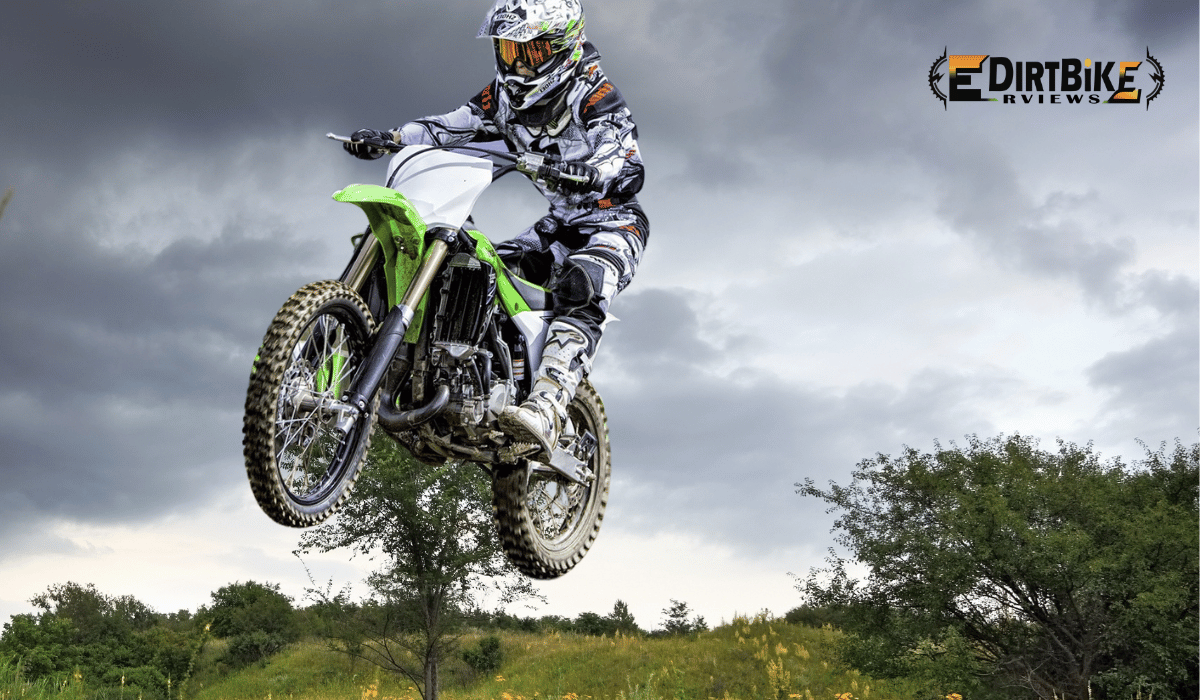

Understanding the impact of weather on electric dirt biking is crucial for both the safety and enjoyment of the rider, as well as for the longevity and performance of the bike. Weather conditions can dramatically affect the riding experience, from altering the bike’s handling and efficiency to challenging the rider’s skills and preparedness. For instance, wet conditions can affect traction and braking, while extreme temperatures can influence battery performance and bike reliability.
Moreover, as electric dirt bikes rely on electrical components and battery systems, they are susceptible to weather-related challenges unique to traditional bikes. Elements like rain, mud, snow, and extreme temperatures can significantly impact the electrical systems, battery life, and overall bike durability. Therefore, riders need to know how different weather conditions can affect their bike’s performance and how to prepare and respond to these challenges adequately.
Electric dirt biking is an exhilarating sport and a testament to the advancements in sustainable transportation. However, with this innovation comes the need to understand and adapt to how weather can influence the electric dirt biking experience. This knowledge ensures the rider’s safety and enjoyment and the optimal performance and longevity of their electric dirt bike.
Table of Contents
The Influence of Weather on Electric Dirt Bike Performance
Temperature Effects
Temperature fluctuations notably influence the performance of electric dirt bikes. Batteries, the powerhouse of these bikes, are sensitive to extreme temperatures. Battery capacity can decrease in cold conditions, reducing range and power output. The cold can cause the batteries to discharge more quickly and reduce efficiency. Conversely, in sweltering conditions, batteries can overheat, which may lead to thermal throttling, where the system reduces power output to prevent damage. This thermal effect can also accelerate battery degradation over time, affecting the long-term performance and reliability of the bike.
Rain and Water Exposure
Electric dirt bikes, like all electrical systems, have a degree of vulnerability to water. While many modern electric bikes are designed with waterproofing features to withstand typical wet conditions encountered off-road, prolonged exposure to water or riding in heavy rain can still pose risks. Water can penetrate seals and enclosures, potentially damaging the electrical components and battery. Furthermore, wet conditions can affect traction and braking, increasing the risk of accidents. Riders must understand their bike’s water resistance capabilities and take appropriate measures to protect it from excessive water exposure.
Wind Conditions
Wind can also impact the riding experience on an electric dirt bike, though the effects are more indirect than temperature and rain. Strong winds can make riding more challenging, especially in open or exposed areas, by affecting stability and rider control. Crosswinds can push the rider off course, requiring more effort to maintain balance and direction. Additionally, headwinds can cause increased energy consumption as the rider and bike work harder against the wind resistance, potentially reducing the bike’s range.
Terrain and Weather Interplay
The interplay between terrain and weather significantly affects electric dirt bike performance. Varied terrains like mud, sand, and snow can behave differently under various weather conditions, affecting traction and control. For example, mud can become more slippery and challenging to navigate after rain, requiring more power and battery usage to maintain speed and control. Snow and ice can reduce traction, necessitating careful handling to prevent accidents. The bike’s performance on these terrains, influenced by weather conditions, highlights the importance of understanding and adapting to the combined effects of weather and terrain for safe and efficient riding.
In conclusion, the performance of electric dirt bikes is considerably affected by weather conditions, including temperature variations, rain and water exposure, wind, and the complex interaction between terrain and weather. Riders must be aware of these factors and prepare accordingly to ensure their safety and the optimal functioning of their bikes in diverse weather conditions.
Electric Dirt Bike Design for Weather Adaptability
Waterproofing and Water Resistance
Manufacturers of electric dirt bikes prioritize waterproofing and water resistance in their designs to enhance the bikes’ adaptability to various weather conditions. Critical components such as the battery, motor, and control systems are encased in waterproof or water-resistant housings to prevent moisture ingress. Seals and gaskets are employed at junctures and openings to block water. At the same time, protective coatings on electrical circuits and connectors provide an additional defense against corrosion and short-circuiting. These design features ensure electric dirt bikes can withstand rain and wet terrain exposure, allowing riders to navigate through challenging conditions without compromising the bike’s performance or safety.
Temperature Management Systems
Electric dirt bikes are equipped with temperature management systems to address the challenges posed by temperature extremes. These systems are designed to maintain optimal battery and motor performance in hot and cold conditions. In cold weather, battery management systems (BMS) can include thermal insulation and heating mechanisms to prevent the battery’s temperature from dropping too low, thus preserving its efficiency and range. In contrast, for hot weather conditions, these systems often feature cooling technologies like air or liquid cooling to dissipate excess heat and prevent overheating. By regulating the temperature, these management systems protect the bike’s components, ensuring consistent performance and prolonging the lifespan of the battery and motor.
Durability in Various Weather Conditions
The overall durability of electric dirt bikes in diverse weather conditions is a critical consideration in their design. Materials used in the construction of the bike, such as frames, casings, and external components, are chosen for their strength, corrosion resistance, and ability to withstand environmental stress. This includes using alloys and plastics that resist rust and decay when exposed to moisture, mud, or salt. The design also considers the impact of UV radiation, ensuring that materials do not degrade quickly when exposed to sunlight for prolonged periods. These design choices ensure that electric dirt bikes remain robust and reliable, whether ridden in scorching heat, cold, or during torrential rains.
In conclusion, the design of electric dirt bikes for weather adaptability focuses on waterproofing, temperature management, and overall durability. These features collectively ensure that the bikes can withstand and perform optimally in various weather conditions, providing riders with confidence in the reliability and safety of their electric dirt bikes regardless of the environmental challenges they face.
Riding Strategies in Different Weather Conditions
Tips for Wet Conditions
Riding an electric dirt bike in wet conditions requires careful preparation and technique. Firstly, riders should ensure their bike’s waterproofing is up to standard to prevent water-related damage. When navigating wet terrain, reducing speed and using gentle, smooth inputs for throttle, brakes, and steering can help maintain control and prevent skidding or sliding. Avoiding deep puddles or streams where water could submerge critical components is also essential. Tires with appropriate tread patterns can enhance grip in slippery conditions, and riders should wear waterproof gear to stay dry and focused.
Handling Cold Weather Riding
Cold weather can significantly impact battery performance and rider comfort. Riders should store their electric dirt bike in a temperature-controlled environment to maximize battery life and efficiency when not in use. Pre-warming the battery before riding can also help. On the trail, conserving battery power by maintaining a steady pace and avoiding unnecessary acceleration is wise. Dressing in layers with thermal and windproof clothing will keep the rider warm and reduce the cold’s impact on performance and endurance.
Strategies for Windy Conditions
In windy conditions, the key is to reduce the bike’s profile against the wind and maintain stability. Leaning slightly into the wind can help counteract its force. Riders should be prepared for sudden gusts, keeping a relaxed grip on the handlebars to allow quick adjustments. Reducing speed and avoiding risky maneuvers is also advisable, as wind can unpredictably affect the bike’s path. Choosing routes sheltered from the wind, when possible, can make for a more enjoyable and less exhausting ride.
Adapting to Changing Terrains
Electric dirt bikes must handle a variety of terrains, which can change rapidly with the weather. Riders should be observant and ready to adjust their riding style accordingly. For instance, it may be necessary to shift weight rearward to improve traction in muddy or sandy conditions. On rocky or uneven terrain, standing on the pegs can help absorb shocks and give better control. It’s crucial to continuously assess the terrain and adjust speed, riding position, and bike settings (like suspension and power delivery) to safely and effectively navigate different landscapes.
In conclusion, riding an electric dirt bike in varying weather conditions demands adaptability and skill. By employing strategies tailored to wet, cold, and windy environments and being prepared to adjust to changing terrains, riders can enhance their experience and ensure both their safety and the longevity of their bike.
Maintenance and Care for Electric Dirt Bikes in Varied Climates
Routine Checks and Maintenance
Regular maintenance is essential for electric dirt bikes’ optimal performance and longevity, especially when ridden in varied climates. Routine checks should include inspecting the battery’s charge level and health, ensuring all electrical connections are secure and corrosion-free, and verifying that the motor and controller are functioning correctly. Mechanical components like brakes, suspension, and tires also need regular inspection for wear and proper operation. It’s essential to follow the manufacturer’s recommended service intervals and to promptly address any issues to prevent minor problems from escalating into significant failures.
Post-Ride Care in Adverse Weather
After riding in rain, snow, or dusty conditions, cleaning the bike properly is crucial to remove any debris, moisture, or corrosive substances that could damage its components. Start by gently rinsing the bike to wash away mud and grime, avoiding direct water spray on sensitive electrical parts. To prevent moisture-related issues, dry the bike thoroughly, especially around electrical connections and battery compartments. Lubricating moving parts, such as the chain and suspension pivots, can help protect them from rust and wear. Inspecting the bike for any damage caused by exposure to harsh conditions should be part of the post-ride care routine.
Long-term Storage and Weather Considerations
When storing an electric dirt bike for extended periods, particularly in regions with extreme weather, it’s essential to consider the environment’s impact on the bike’s components. The battery should be stored at a moderate temperature and charged to the level recommended by the manufacturer to maintain its health. The storage area should be dry and free from extreme temperature fluctuations to prevent damage to the bike’s electrical and mechanical systems. Covering the motorcycle with a breathable, waterproof cover can protect it from dust and moisture. Additionally, periodic checks during storage can help ensure that the bike remains in good condition and is ready to perform reliably when next used.
In summary, maintaining and caring for an electric dirt bike in varied climates involves routine checks, diligent post-ride care, and proper storage practices. These efforts help to ensure the bike’s reliability, performance, and longevity, enabling riders to enjoy their electric dirt biking experience in any weather condition.
Personal Insights on Electric Dirt Biking
Unique Experiences and Observations
Having spent considerable time navigating diverse terrains and weather conditions on electric dirt bikes, I’ve observed their remarkable evolution and adaptation to the off-road environment. One standout experience was riding through a dense forest trail after a heavy rainstorm. The silent operation of the electric motor allowed me to immerse fully in the natural surroundings, a stark contrast to the noise of a gas-powered bike. The bike’s instant torque and smooth power delivery were exceptional, providing precise control through slippery sections and over wet leaves, showcasing the synergy between technology and nature.
Expert Opinion on Electric Dirt Bike Performance in Various Weathers
From a performance perspective, electric dirt bikes exhibit unique strengths and vulnerabilities across different weather conditions. I noticed a decreased battery range in cold weather, highlighting the importance of thermal management systems that can maintain battery efficiency. However, the low-end torque of electric motors is a boon in snowy or muddy conditions, offering controlled power output that helps maintain traction.
In wet conditions, the reduced noise and absence of exhaust emissions of electric bikes enhance the riding experience, though the importance of waterproofing becomes evident to protect the electrical components. During hot weather rides, the absence of a heat-emitting engine makes electric dirt bikes more comfortable, though attention must be paid to preventing battery overheating.
Electric dirt bikes also excel in windy conditions, where their lower center of gravity and stable handling inspire rider confidence. The ability to adjust power settings on the fly allows for a tailored riding experience, responding dynamically to the challenges of gusty winds.
In conclusion, my experiences with electric dirt biking have affirmed their potential to transform off-road riding. Their performance in various weather conditions, combined with the environmental benefits, positions them as a compelling choice for the future of the sport. While there are challenges related to weather impacts on battery life and electrical systems, ongoing technological advancements continue to enhance their resilience and capability, making electric dirt bikes increasingly viable and enjoyable under diverse environmental conditions.
Frequently Asked Questions (FAQs)
Does rain affect electric bikes?
Rain can affect electric dirt bikes, especially if they are not waterproofed. Modern electric bikes are generally designed to handle light to moderate rain without damage to the electrical components, thanks to protective casings and seals. However, prolonged exposure to heavy rain or submersion in water can lead to potential risks like short-circuiting or corrosion. It’s essential to check the manufacturer’s guidelines on the bike’s water resistance and take precautions during wet conditions.
How cold is too cold for Ebikes?
Electric dirt bikes can operate in cold weather, but their performance may diminish below freezing (0°C or 32°F). Extreme cold can reduce battery efficiency and capacity, leading to shorter ride times and decreased power. To mitigate cold weather effects, it is advisable to store the bike in a warmer environment when not in use and use thermal insulation for the battery, if available. Generally, temperatures below -10°C (14°F) are challenging for electric bikes and could warrant special considerations for battery care and bike operation.
Do electric bikes work in the snow?
Yes, electric dirt bikes can work in the snow, provided they have the appropriate tires and the rider has the necessary skills. The key is to maintain traction and control in slippery conditions. Fat tires with deep treads benefit snow riding, providing better grip. However, extreme cold and wet conditions can affect battery performance and risk damage to the electrical system, so it’s crucial to ensure the bike is suitably equipped and maintained for snowy conditions.
Can heat affect electric dirt bike performance?
Yes, high temperatures can cause the battery to overheat, reducing efficiency and potential damage. Cooling systems and proper thermal management are essential to maintaining performance in hot weather.
Are electric dirt bikes suitable for all seasons?
Electric dirt bikes can be ideal for all seasons, but their performance and maintenance needs vary with the weather. Riders must adapt to seasonal conditions, ensuring their motorcycle is appropriately prepared and maintained for optimal performance year-round.
How can I protect my electric dirt bike from weather-related wear and tear?
Regular maintenance, proper storage, and using weather-appropriate protective gear for your bike, such as covers and guards, can help protect it from weather-related wear and tear. Following the manufacturer’s guidelines for care and maintenance is also crucial.
These FAQs underscore the importance of understanding the interplay between weather conditions and electric dirt bike performance. They emphasize proper preparation and maintenance to ensure a safe and enjoyable riding experience.
Conclusion
Throughout this comprehensive exploration, we have delved into the significant impact of weather conditions on electric dirt biking, scrutinizing how elements like temperature, rain, wind, and terrain interact with these innovative machines. We’ve learned that electric dirt bikes are designed with weather adaptability in mind, featuring waterproofing, temperature management systems, and robust durability. However, they still require mindful riding strategies and maintenance to navigate varied climates successfully.
Electric dirt bikes offer a sustainable and exhilarating off-road experience, with technological advancements enhancing their performance and reliability in different weather scenarios. From wet and muddy trails to cold, windy, or hot conditions, these bikes have proven capable of handling diverse environmental challenges, albeit with considerations for battery life and component protection.
Electric dirt bikes are a testament to the progress in off-road motorcycling, marrying eco-friendliness with performance. Their resilience against weather challenges, coupled with the proper care and handling, ensures they are a novelty and a viable and sustainable option for enthusiasts and professionals alike. As technology continues to evolve, the future of electric dirt biking looks promising, offering riders the thrill of the ride while minimizing environmental impact.
E-Bike Tips & Guides
Choosing the Right Tires for Your Electric Dirt Bike
With our expert guide, master the art of selecting the perfect tires for your electric dirt bike. Discover how the right tires enhance every ride’s performance, safety, and enjoyment.
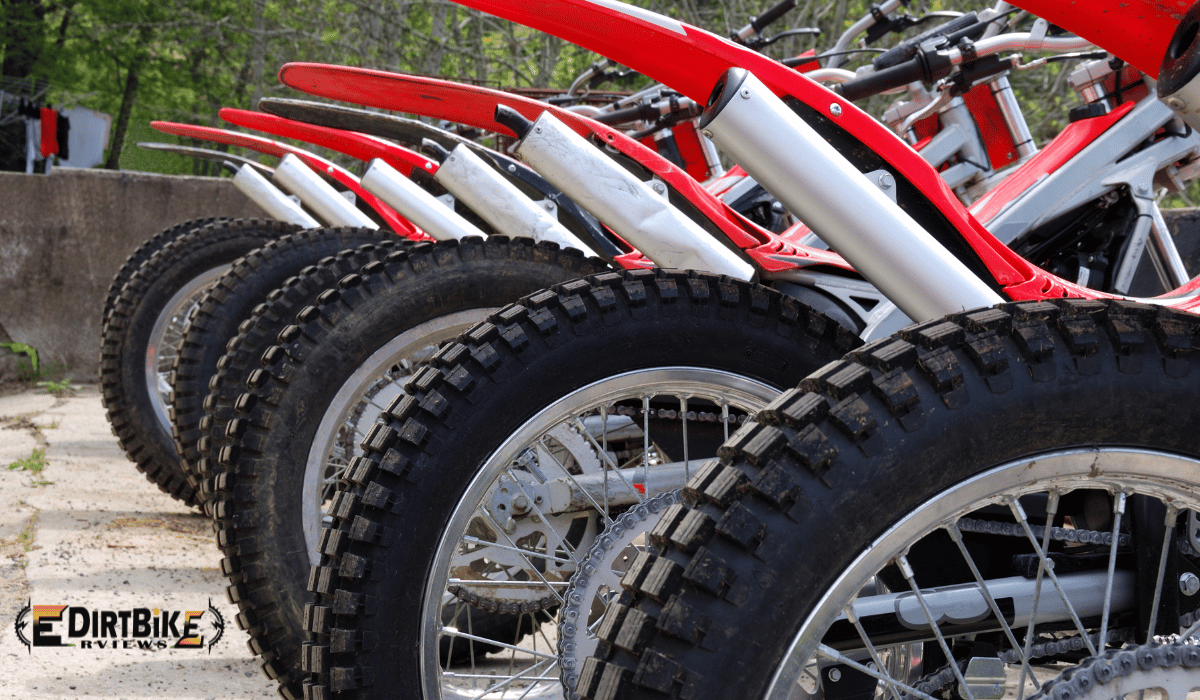

Choosing the right tires for your electric dirt bike is a decision that significantly influences both performance and safety. Tires are the sole contact point between the bike and the ground, playing a pivotal role in how the bike handles various terrains, responds to rider inputs, and performs under different riding conditions. This selection process becomes even more critical with electric dirt bikes, where the unique characteristics of electric power delivery can affect tire wear and performance.
Table of Contents
Selecting the Right Tires for Electric Dirt Bikes
The right tires can transform the riding experience, offering improved traction, stability, and confidence on the trail. Electric dirt bikes, known for their instant torque and consistent power output, require tires that can handle the immediate force and provide adequate grip to efficiently transfer this power into forward motion. The selection is not just about the tire’s ability to endure the power but also its compatibility with the bike’s design and the rider’s style, ensuring that the bike’s capabilities are fully utilized.
Impact of Tires on Performance and Safety
The impact of tires on an electric dirt bike’s performance is profound. Well-chosen tires enhance handling, allowing for sharper turns, better control of technical sections, and more effective braking. They can also reduce the risk of slippage and accidents, particularly in challenging weather or rugged terrain, safeguarding the rider. On the safety front, the right tires lessen the wear on the bike’s components, promote longer battery life by requiring less power to overcome rolling resistance, and generally contribute to a more stable and predictable ride.
Selecting the right tires for an electric dirt bike is crucial to ensuring optimal performance and safety. The choice should be informed by understanding how different tires interact with electric bike dynamics, the intended riding environment, and the rider’s preferences and skills. With the appropriate tires, riders can maximize their enjoyment and control, making every ride safer and more satisfying.
Understanding Tire Basics
Types of Dirt Bike Tires and Their Characteristics
Dirt bike tires come in various types, each designed to perform best under specific conditions:
- Knobby Tires: Characterized by large, spaced-out knobs, these tires offer excellent traction on soft, muddy, or loose surfaces. The knobs dig into the terrain, providing a grip that is essential for off-road riding.
- Intermediate Tires: These are the all-rounders of dirt bike tires, featuring medium-sized knobs with closer spacing. They perform well on various terrains, from soft dirt to hard-packed trails.
- Hard Terrain Tires: Designed for riding on hard, rocky, or compacted surfaces, these tires have smaller, tightly spaced knobs. They offer a larger contact area with the ground, enhancing grip on hard surfaces.
Tire Size and Its Implications for Riding
The size of the tire, typically denoted by width and diameter measurements, affects the bike’s handling and performance. Larger tires may provide better traction and stability due to a larger contact patch with the ground but can also increase rolling resistance, affecting acceleration and battery efficiency. Conversely, smaller tires might offer quicker handling and less rolling resistance but could reduce stability and traction.
Tread Patterns and Terrain Compatibility
The tread pattern on a dirt bike tire plays a crucial role in determining its suitability for different terrains:
- Mud Treads: Designed with wide-spaced, large knobs to prevent mud from clogging, these treads are ideal for wet and muddy conditions, allowing the tire to penetrate the surface and find traction.
- Sand Treads: These tires have a paddle-like design, optimal for loose, sandy terrains where the wide-spaced knobs help in creating a scooping action for better propulsion.
- Rocky Treads: Featuring smaller, closer-spaced knobs and often made of more complex rubber compounds, these tires are designed to grip onto rocky surfaces and resist puncture or damage from sharp edges.
In summary, understanding the basics of dirt bike tires, including the types, sizes, and tread patterns, is essential for selecting the right tire for your electric dirt bike. The choice should align with the typical riding conditions and personal riding style to ensure optimal trail performance, safety, and enjoyment.
Special Considerations for Electric Dirt Bikes
How Electric Dirt Bike Performance Influences Tire Choice
Electric dirt bikes exhibit characteristics that distinctly influence tire selection. Electric motors’ instant torque and continuous power delivery can lead to faster tire wear, especially if the tires are not designed to handle such forces. The acceleration characteristics of electric bikes mean that tires need to have excellent traction to prevent slipping and to utilize the motor’s power effectively. Additionally, since electric dirt bikes often have a heavier build due to the battery, choosing tires that can support the additional weight without compromising performance is crucial.
Durability and Wear Considerations for Electric Bikes
The durability of tires on electric dirt bikes is a significant consideration due to the unique demands of electric propulsion. Tires must be robust enough to withstand the constant torque and be made of compounds that resist wear from the electric motor’s immediate power output. The regenerative braking standard in electric dirt bikes also affects tire wear patterns, potentially causing the rear tire to wear down differently than on a gas-powered motorcycle. Therefore, when selecting tires for an electric dirt bike, it’s essential to consider those explicitly designed for electric or high-performance vehicles, as they are more likely to offer the durability and wear characteristics suited to the bike’s performance profile.
In summary, the performance attributes of electric dirt bikes require careful consideration when choosing tires. The right tires for an electric dirt bike should accommodate the machine’s power and weight and offer durability and wear characteristics that align with the unique aspects of electric biking. This careful selection ensures sustained performance and enhances the overall riding experience.
Selecting Tires for Different Riding Conditions
Tires for Muddy and Wet Conditions
When riding an electric dirt bike in muddy and wet conditions, tires with deep, wide-spaced knobs are ideal. These tread patterns help clear mud quickly and prevent the tire from clogging, maintaining traction in slippery conditions. The knobs’ depth ensures that the tire can penetrate the surface layer of mud to reach firmer ground beneath, providing better grip. Tires designed for wet conditions often have softer rubber compounds to enhance grip on slick surfaces.
Tires for Sandy or Loose Terrain
In sandy or loose terrain, where flotation and stability are critical, tires with a broader profile and flexible knobs are preferable. These features allow the tire to float over the sand rather than digging in, preventing the bike from bogging down. The flexible knobs adapt to the shifting sands, providing a larger contact area and improving traction. The tire’s construction should be durable enough to withstand the abrasive nature of sand, which can quickly wear down the tread.
Tires for Rocky or Hard-Packed Trails
Riding on rocky or hard-packed trails requires tires with solid sidewalls and dense, less pronounced tread patterns. These characteristics prevent punctures from sharp rocks and provide a stable ride on hard surfaces. The tread should offer enough grip to handle the terrain’s irregularities while being smooth enough to maintain contact with the ground. Hard compound tires are typically used in these conditions as they are more resistant to wear and tear and provide better stability at higher speeds.
In conclusion, selecting the right tires for specific riding conditions is crucial for enhancing the performance and safety of an electric dirt bike. To ensure optimal traction, stability, and durability, the tire choice should be based on the terrain’s nature, whether muddy, sandy, or rocky. By matching the tires to the expected riding conditions, riders can maximize their electric dirt bike’s capabilities and enjoy a safer, more satisfying experience on the trails.
Maintenance and Care for Dirt Bike Tires
Regular Inspection and Maintenance Routines
Proper tire maintenance is essential for ensuring the safety and performance of your electric dirt bike. Regular inspections should be part of your maintenance routine. Check for signs of wear, such as tread depth reduction, and look for damage like cuts, punctures, or embedded objects. Tire pressure should be checked before each ride, as incorrect pressure can affect the bike’s handling, increase tire wear, and potentially lead to tire failure.
Rotating the tires periodically can promote even wear, especially if one tire tends to wear down faster than the other due to the bike’s weight distribution or riding style. Cleaning the tires and removing debris from the treads after rides can also extend their life and prevent premature wear.
When to Replace Your Dirt Bike Tires
Knowing when to replace your dirt bike tires is crucial for maintaining optimal performance and safety. Key indicators for replacement include:
- Tread Wear: If the tread depth exceeds the manufacturer’s recommended limit, it’s time for a new tire. Worn treads compromise the tire’s grip and can significantly affect the bike’s handling, especially in adverse conditions.
- Age and Condition: Over time, tires degrade due to exposure to elements, even if they’re not used frequently. Cracks, hardening, or noticeable performance decline are signs that the tires need replacing.
- Damage: Any signs of severe damage, like deep cuts, punctures, or sidewall bulges, indicate that a tire needs to be replaced immediately to avoid the risk of blowouts or accidents.
Regular maintenance and timely tire replacement are vital for ensuring the performance and safety of your electric dirt bike. By keeping a close eye on the condition of your tires and addressing any issues promptly, you can enjoy a reliable and safe riding experience.
Personal Insights on Tire Selection for Electric Dirt Bikes
Experiences with Different Tires in Various Conditions
Through years of riding and testing various electric dirt bikes, I’ve learned that tire selection can dramatically alter the bike’s performance and the rider’s experience. For instance, while navigating muddy trails, tires with aggressive tread patterns provided the necessary grip to power through without getting stuck. In contrast, when riding on sandy dunes, wider tires with a paddle-like design offered the flotation needed to glide over the surface rather than digging in.
One particular experience that stands out was riding with a set of high-performance tires on rocky terrain. The tires’ reinforced sidewalls and specific tread design provided exceptional stability and traction, making a noticeable difference in handling sharp rocks and hard-packed paths. This experience underscored the importance of choosing tires specifically designed for the terrain and conditions of the ride.
Recommendations Based on Riding Style and Bike Specifications
Selecting the right tires for your electric dirt bike involves considering your riding style and the bike’s specifications. Tires with durable construction and aggressive tread patterns are essential for aggressive riders who push their bikes to the limits on challenging terrains. These riders should look for tires that can withstand high torque and provide excellent traction in various conditions.
Conversely, a less aggressive tread pattern might be more appropriate for casual riders or those using their bikes primarily on smooth trails, offering a balance between grip and riding comfort. Additionally, the weight and power output of the electric dirt bike should influence tire choice. Heavier and more powerful bikes require tires that can handle the extra load and power, emphasizing the need for durability and robustness.
In conclusion, my experiences have taught me that there is no one-size-fits-all answer to tire selection for electric dirt bikes. Instead, the best choice depends on careful consideration of the riding conditions, personal riding style, and the bike’s specific capabilities and characteristics. With the right tires, riders can enhance the performance and enjoyment of their electric dirt biking adventures.
Frequently Asked Questions (FAQs)
What size tires are best for an electric dirt bike?
The best tire size for an electric dirt bike depends on the bike’s design, intended use, and rider preference. Generally, larger tires provide better stability and are more capable of handling various terrains, making them suitable for off-road conditions. However, smaller tires might offer more agility and faster acceleration. When selecting tire size, it’s essential to refer to the bike manufacturer’s recommendations and consider the type of terrain you plan to ride on.
Do e-bikes require special tires?
While electric dirt bikes don’t necessarily require special tires, it’s advisable to choose tires that can withstand the unique demands of electric propulsion, such as instant torque and increased weight. Tires designed for electric bikes often have reinforced structures to handle the additional stress and provide better durability and performance.
Do I need ebike-specific tires?
Using ebike-specific tires can be beneficial due to their optimized design for electric bikes’ weight and power output. These tires usually feature more durable materials and construction to cope with electric dirt bikes’ higher torque and speeds. While not mandatory, ebike-specific tires can enhance the performance and safety of your ride.
How often should I replace the tires on my electric dirt bike?
Tire replacement frequency on an electric dirt bike depends on usage, terrain, and tire quality. Regularly inspect your tires for wear and damage, and replace them when the tread depth is below the recommended level or if there are signs of significant wear, damage, or aging. Active riders might need to replace their tires once a season or more, depending on the riding conditions.
These FAQs cover the essential aspects of tire selection and maintenance for electric dirt bikes, guiding riders in making informed decisions to optimize their bike’s performance and safety.
Conclusion
Choosing the right tires for an electric dirt bike is a critical decision that significantly impacts the bike’s performance, safety, and overall riding experience. This comprehensive discussion has highlighted the factors riders must consider, including tire size, tread pattern, terrain compatibility, and whether to opt for e-bike-specific tires.
Recap of Key Points on Choosing the Right Tires
- Tire Size and Type: Selecting the appropriate size and type of tire for your electric dirt bike is essential for optimal performance and handling. Your choices will vary based on terrain and your personal riding style.
- Tread Patterns: The tread pattern should match the riding conditions you most frequently encounter, whether mud, sand, rocky trails or hard-packed dirt paths.
- Durability and Performance: Considering the unique demands of electric dirt bikes, such as higher torque and potentially heavier weights, it’s advisable to choose tires with enhanced durability and performance.
The Significance of Tire Selection in Enhancing the Electric Dirt Biking Experience
The right tires can transform an electric dirt bike ride from good to exceptional. They ensure better traction, improved stability, and a safer riding experience, allowing riders to fully exploit their electric bikes’ capabilities. The silence and power of electric dirt biking, combined with the perfect tire choice, can elevate the adventure, allowing riders to confidently tackle diverse terrains and enjoy the journey to its fullest.
In summary, tire selection is a fundamental aspect of electric dirt bike preparation that should not be overlooked. With the right tires, riders can enhance their electric dirt biking experience, ensuring each ride is as thrilling, safe, and satisfying as possible. By understanding and applying this article’s insights, riders can make informed decisions that optimize their bike’s performance and suit their riding preferences.
-
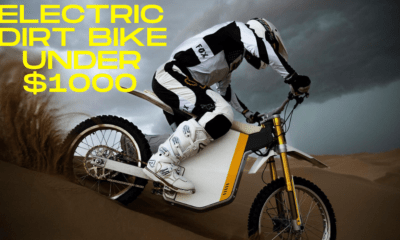
 Electric Dirt Bike For Kids2 years ago
Electric Dirt Bike For Kids2 years agoElectric Dirt Bikes Under $1000: Your Ultimate Guide to Affordable Off-Road Adventure
-
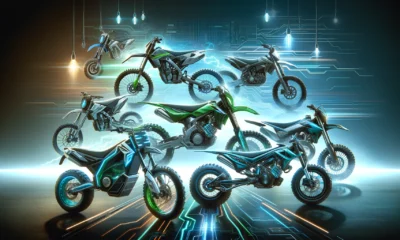
 Electric Dirt Bike For Adults2 years ago
Electric Dirt Bike For Adults2 years agoTop 11 Electric Dirt Bikes for Adults in 2024: Unleashing the Future of Off-Road Adventure
-
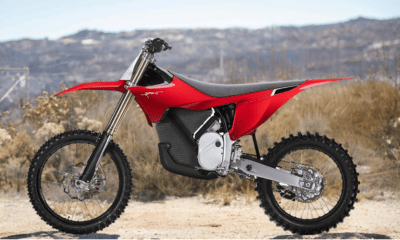
 Electric Dirt Bike For Adults2 years ago
Electric Dirt Bike For Adults2 years agoUnleashing Power and Innovation: The Stark Varg Electric Dirt Bike Reviewed
-
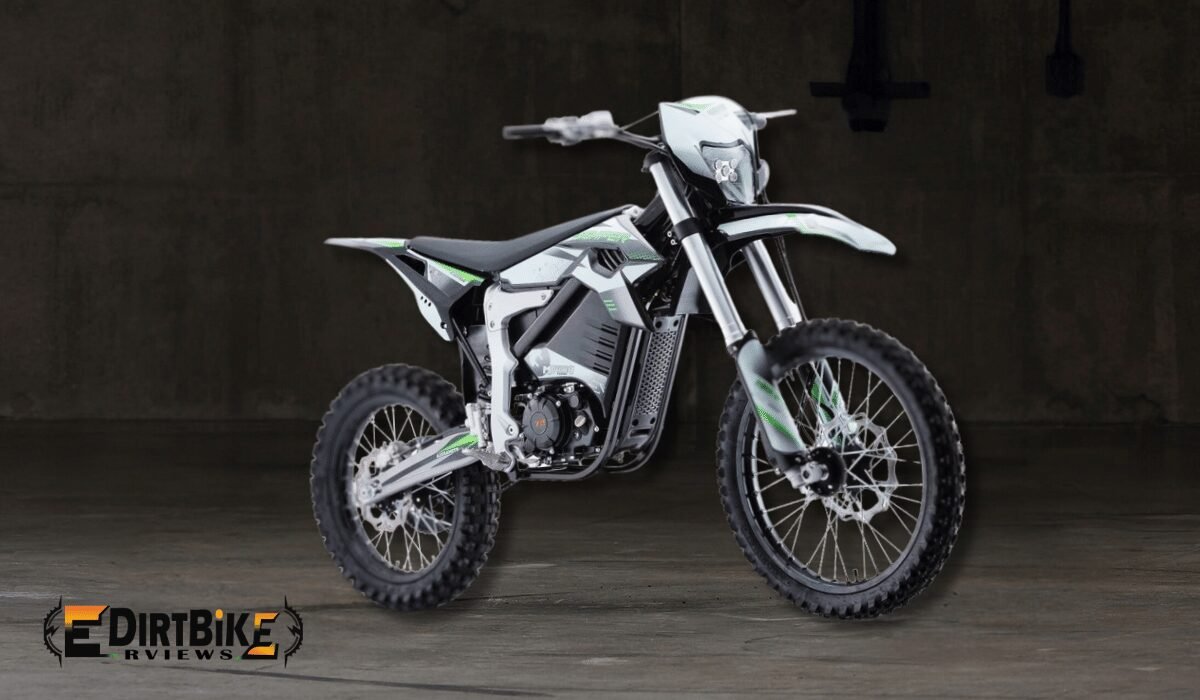
 Electric Dirt Bike For Adults2 years ago
Electric Dirt Bike For Adults2 years agoUnleashing the Thrill: MotoTec Venom 72V 12000W Electric Dirt Bike Review
-
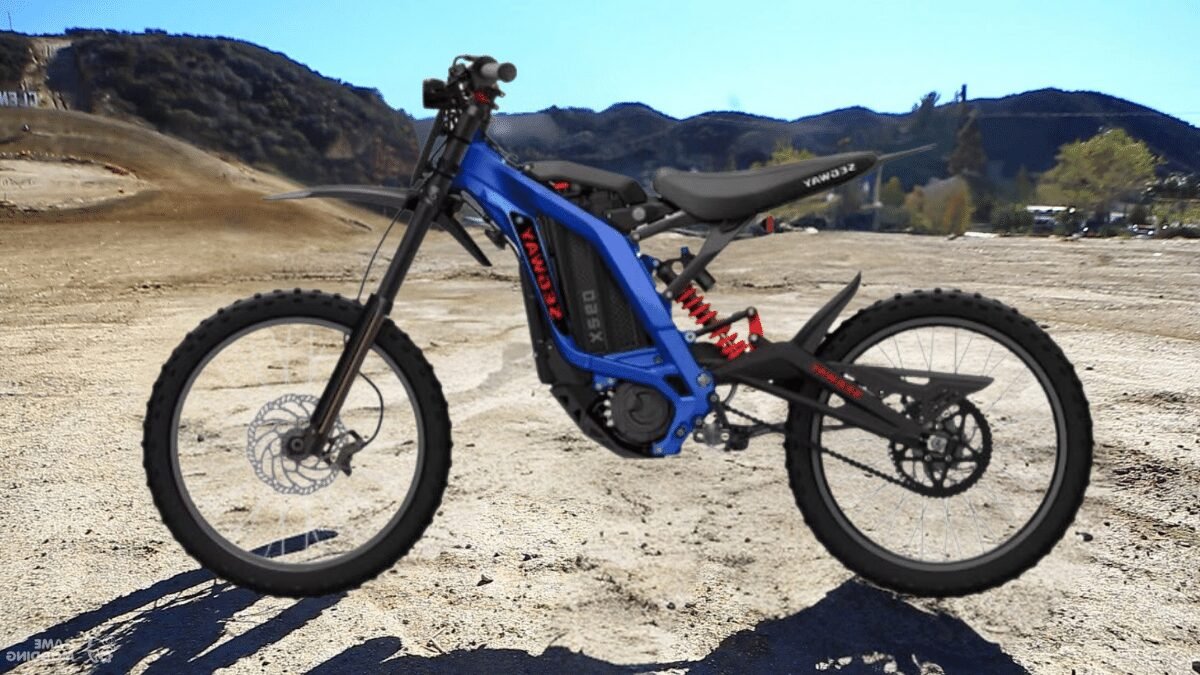
 Electric Dirt Bike For Adults2 years ago
Electric Dirt Bike For Adults2 years agoUnveiling the Segway Dirt eBike X260: Power, Performance, and Adventure
-
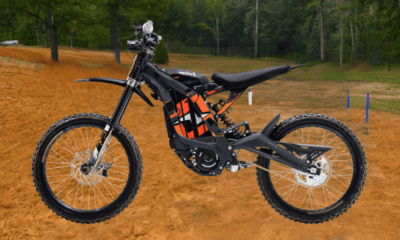
 Electric Dirt Bike For Adults2 years ago
Electric Dirt Bike For Adults2 years agoConquering Trails with the Sur-Ron Light Bee X: A Comprehensive Review
-
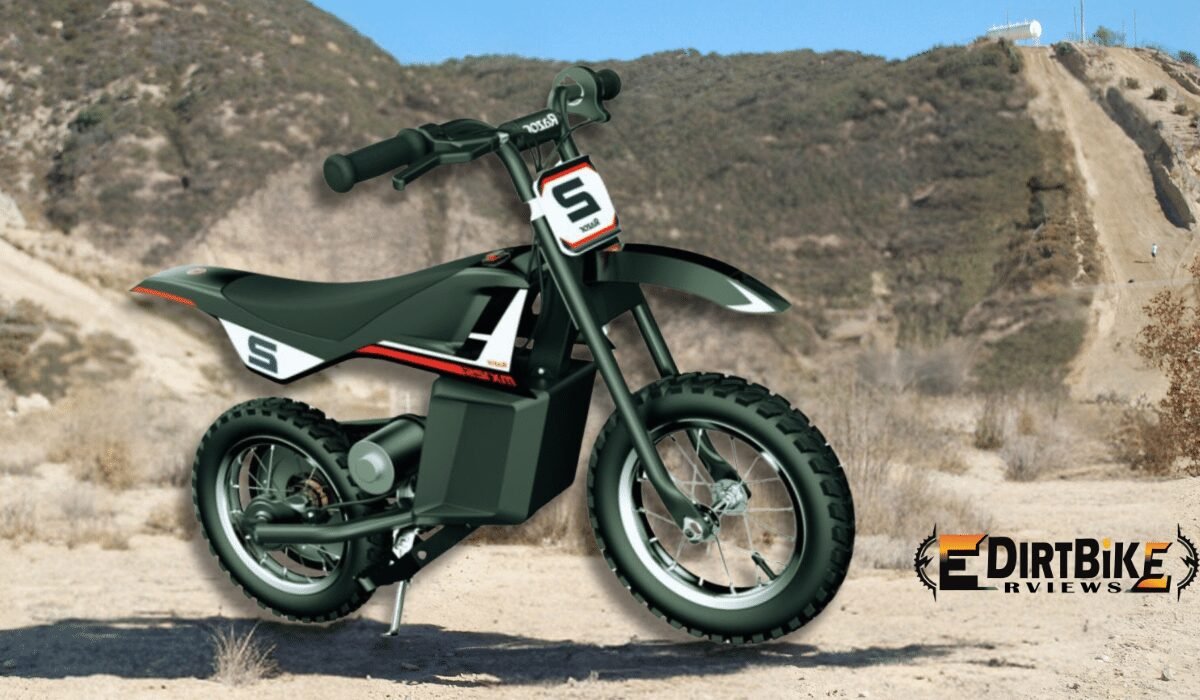
 Electric Dirt Bike For Kids2 years ago
Electric Dirt Bike For Kids2 years agoRazor MX125 Electric Dirt Bike Review: The Ideal Starter Bike for Kids
-
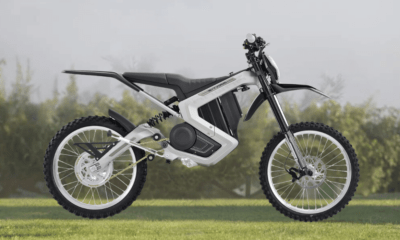
 Electric Dirt Bike For Adults2 years ago
Electric Dirt Bike For Adults2 years agoUnleashing the Power of the Rawrr Mantis: The Ultimate Electric Dirt Bike Experience













